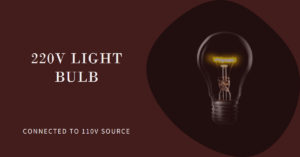Low voltage can have detrimental effects on electronic devices, compromising their performance and potentially causing irreversible damage.
Understanding the risks associated with low voltage is crucial for maintaining the longevity and functionality of our electronic devices.
Low voltage can damage electronics. When electronic devices experience low voltage conditions, they are at risk of reduced performance, functional issues, and potential damage. Insufficient voltage levels can lead to slower processing speeds, increased error rates, and even permanent component failure.
Understanding Voltage Levels
Standard voltage levels for electronics: Most electronic devices are designed to operate within specific voltage ranges. In the United States, the standard household voltage is typically 120 volts, while other countries may have different standards.
Voltage variations and fluctuations: Voltage variations can occur due to several factors, such as power grid instability, electrical faults, or heavy loads on the electrical system. Fluctuations can cause voltage levels to drop below the standard range, leading to low voltage conditions.
Effects of Low Voltage on Electronics
Voltage drop and its impact on electronic devices: When electronic devices experience low voltage conditions, they may not receive the necessary power to function optimally. This can lead to reduced performance, slower processing speeds, and increased error rates.
Reduced performance and functionality: Low voltage can cause electronic devices to underperform or operate erratically. For example, a computer with insufficient voltage may freeze or crash frequently, while a refrigerator might fail to maintain the desired temperature.
Potential damage to sensitive components: Sensitive electronic components, such as integrated circuits and microprocessors, can be particularly susceptible to low voltage damage. Insufficient voltage levels may cause overheating or electrical stress, resulting in permanent component failure.
Increased risk of data corruption: Low voltage conditions can pose a risk to data integrity, especially in storage devices like hard drives or solid-state drives (SSDs). The insufficient power supply can lead to data corruption or loss, potentially impacting critical files or software.
Specific Risks for Different Types of Electronics
Computers and laptops
- Impact on processors, memory, and storage devices: Low voltage can hinder the performance and reliability of computer components, leading to slower processing speeds and potential data loss.
- Risks to power supplies and batteries: Inadequate voltage levels can strain power supply units and laptop batteries, reducing their lifespan and potentially causing failures.
Read also my article: Beware the Voltage: Can High Voltage Damage Your PC?
Mobile devices
- Battery-related issues: Low voltage conditions can affect the charging capacity and overall battery life of mobile devices, resulting in shorter usage times and frequent recharging.
- Impact on charging and device operation: Insufficient voltage can interfere with the charging process and cause malfunctions in mobile devices, leading to unreliable performance.
Home appliances
- Damage to motors and compressors: Low voltage can harm motors and compressors in appliances such as air conditioners, refrigerators, and washing machines, leading to decreased efficiency and potential breakdowns.
- Effect on electronic control systems: Appliances with electronic control systems, such as smart TVs or ovens, may experience malfunctions or erratic behavior due to low voltage conditions.
Identifying Low Voltage Issues
Symptoms of low voltage problems in electronics: Common signs of low voltage issues include dimming lights, slow device response, flickering screens, frequent error messages, or unusual noises coming from electronic equipment.
Diagnostic tools and methods: Utilizing voltage meters or power analyzers can help identify low voltage problems accurately. Professional electricians can also assess electrical systems to determine if low voltage is a contributing factor to device malfunctions.
Preventing Low Voltage Damage
Voltage stabilization methods: Installing voltage stabilizers or regulators can help maintain a consistent voltage supply to electronic devices, safeguarding them from the negative effects of low voltage.
Uninterruptible Power Supply (UPS) systems: Using UPS systems can provide backup power during voltage fluctuations or power outages, ensuring continuous operation and protecting sensitive electronics.
Surge protectors and voltage regulators: Employing surge protectors with built-in voltage regulation features can shield electronic devices from sudden voltage spikes and dips, offering an additional layer of protection.
Mitigating Low Voltage Effects
Power conditioning techniques: Power conditioners, such as voltage regulators or line conditioners, can help eliminate voltage fluctuations and provide a stable power supply to connected electronics.
Proper grounding and wiring practices: Ensuring proper grounding and using quality wiring installations can minimize voltage drops and provide a reliable electrical connection to electronic devices.
Professional installation and maintenance: Seeking the assistance of licensed electricians for electrical system installations and regular maintenance can help identify and address low voltage issues effectively.
Conclusion
Protecting our electronic devices from low voltage is essential to maintain their optimal performance and prevent potential damage.
By understanding the risks associated with low voltage, implementing preventive measures, and seeking professional assistance when needed, we can ensure the longevity and reliability of our valuable electronics.


